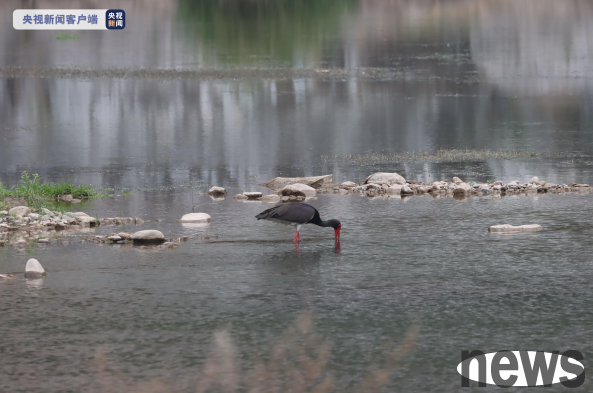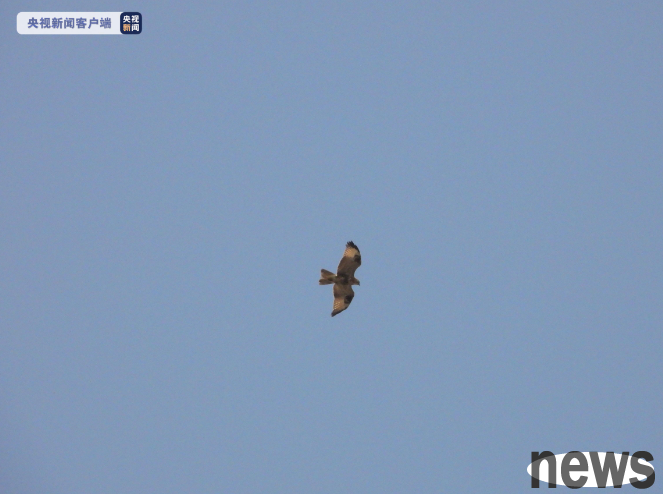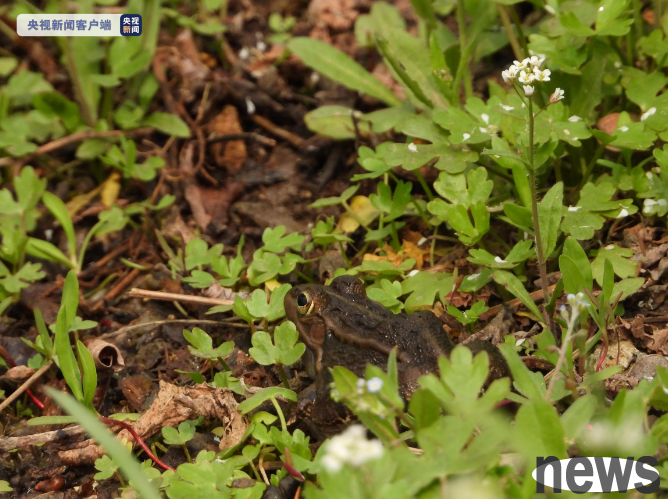This article is reproduced from: CCTV News Client
The reporter learned from the Beijing Ecological Protection Press Conference held by the Beijing Municipal Ecological Environment Bureau this morning that in the biodiversity survey carried out in Beijing, some indicator species that have a certain indicator effect on the continuous improvement of the ecological environment were frequently recorded. In the past decade, the city's urban ecological environment quality has steadily improved, and the continuous improvement of the ecological environment has provided good habitat conditions for biodiversity, indicating that organisms frequently appear in the city.

In 2021, Beijing recorded 65 natural and semi-natural ecosystem groups on the spot, which belong to forests, shrubs, grasslands, meadows and grasslands, wetlands and other types. 17 new recorded species in Beijing were recorded on the spot, including 6 new recorded species in China, all of which are large fungi. From 2020 to 2021, a total of 6,283 species of various species were recorded, including higher plants, vertebrates, insects, large benthic invertebrates, algae, fungi and other species.
Aquatic biological situation
Many organisms rely on a good aquatic ecological environment, and their species and quantity can play a good indicator. For example, the black stork needs to feed on the ground with clear water quality and abundant food. The survey shows that its distribution range has expanded from Fangshan to the entire ecological conservation area, and the number has also increased significantly. Beijing water buttercups need to grow in clear and flowing water bodies. The investigation found that it was distributed in Huairou and Miyun, which was expanded from the original record range. Other typical clean water indicator species such as blackfin phlebone and wide-fin phlebone also have an expansion of distribution range and an increase in number, which can reflect the improvement of the water ecological environment in Beijing to a certain extent.
Terratic biological situation
In the ecosystem, a complete food chain is composed of producers and consumers. A complex food web composed of many food chains is an important condition for the ecosystem to remain stable. Carnivores are senior consumers whose species and numbers can characterize the integrity and health of ecosystems. Raptors among birds are top consumers, and there are survey records in 16 districts across the city. Among mammals, leopard cats are widely distributed in mountainous areas, and weasels often appear in central urban areas. The wide distribution of carnivores shows to a certain extent that the entire city, including the central urban area, has a relatively complete food chain and a healthy ecosystem.
Related situations in key ecological restoration projects in the past decade, Beijing has carried out ecological corridor construction, comprehensive governance and a series of ecological restoration work in the Yongding River Basin. The ecological environment quality of the basin has been significantly improved, and the connectivity of the basin ecosystem has been significantly improved, providing good habitat conditions for restoring rich biodiversity. More than 3,600 species of various creatures were recorded in the Yongding River Basin, of which more than 200 species of birds were recorded, exceeding 80% of the number of bird species recorded in the year, covering six major ecological groups: raptors, swimming birds, wading birds, climbing birds, songbirds and land birds. The investigation recorded more than 30 fish species, including protected and indicator species such as blackfin and broadfin horn, which to some extent reflects the effectiveness of the ecological restoration of Yongding River.

Related information of urban greening isolation areas
Urban greening isolation areas refer to urban and rural junction areas mainly composed of the first and second greening isolation areas. During the 13th Five-Year Plan period, the vegetation coverage area in urban greening isolation areas increased by 18.6%, the connectivity of green patches increased, the degree of fragmentation decreased, the degree of continuous aggregation of patches increased, and the quality of habitat continued to improve, providing more and better habitats for organisms. Especially in the second greening isolation area, more than 1,300 species of organisms were recorded on the spot, including more than 400 higher plants, which not only include a large number of native tree species, but also a large number of wild groundcover plants; nearly 100 species of birds, including kestrels, sparrow hawks, ordinary turtles and other raptors; more than 20 species of fish, including black-finned tartars and broad-finned tartars and other clean water indicator species; mammals include Mongolian rabbits and rock squirrels, etc.; amphibians include golden-lined squid frogs and black-squid frogs, etc.

In addition, more than 400 species of insects, more than 40 species of large benthic invertebrates, more than 100 species of algae and more than 100 species of large fungi were recorded. It is comprehensively shown that the second greening isolation area has a natural ecological space suitable for biological survival, with rich species, relatively healthy ecosystem quality, and ecological restoration benefits have been initially revealed.